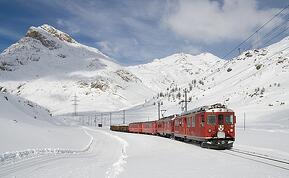World Economic Forum Environmental Trends 2015
 The World Economic Forum (WEF) recently held its annual conference in Davos. On the agenda for this high profile event was a discussion about its Outlook on the Global Agenda 2015 report.[1] The report is the result of a worldwide survey and looks at the top 10 social, economic and political trends that are likely to have a significant impact globally in the next 12-18 months.
The World Economic Forum (WEF) recently held its annual conference in Davos. On the agenda for this high profile event was a discussion about its Outlook on the Global Agenda 2015 report.[1] The report is the result of a worldwide survey and looks at the top 10 social, economic and political trends that are likely to have a significant impact globally in the next 12-18 months.
Interestingly, environmental issues featured heavily in the report, with 3 of the 10 key trends relating to pollution, weather and water concerns.
Rising pollution in the developing world
Industrialisation has largely been a positive force in developing nations, improving economic and social conditions for millions of people across the globe. However, the rapid rate of economic growth has resulted in a number of environmental challenges for many countries. Number 6 on the WEF’s trend’s list for 2015 is the issue of rising pollution in the developing world. Nowhere has this been more apparent than in China where Beijing’s smog crisis regularly makes headlines. A study conducted by the World Health Organisation found that air pollution contributed to 1.2 million premature deaths in China in 2010 highlighting the human cost of this environmental issue.[2]
So what can be done to combat this problem? The answer for many lies in access to finance. According to the World Economic Forum, in the short-term, “there needs to be a flow of funding to the developing world, providing the means to finance change.” This, coupled with international cooperation from developed nations is vital in assisting developing countries to invest in new low-carbon technologies such as renewable energy and carbon capture and storage capabilities. Long-term funding arrangements such as the Green Climate Fund (which was created as part of the Cancun Accord in 2010) would continue to provide a mechanism for helping developing nations adapt to climate change and reduce their greenhouse gas emissions.
Increasing occurrence of severe weather events
2014 saw many record-breaking weather events take place including; floods in Europe, droughts in the US and high temperatures across Australia. Therefore, somewhat unsurprisingly, increasing occurrences of severe weather events featured as a key environmental trend for 2015 in the WEF’s report.
Extreme weather events have led to a renewed media focus on climate change. The Intergovernmental Panel on Climate Change’s (IPCC) 2014 report[3] on climate change mitigation provided new evidence linking extreme weather events and climate change meaning that these occurrences are likely to become more frequent, culminating in both a high social and financial cost.
Natural disasters resulted in US$138 billion worth of damages in 2012. [2] As noted in the WEF’s analysis, “the irony of climate change is that the costs of extreme weather are highest for society’s poorest.” Good adaptation policy is seen as essential in mitigating against the potential cost of severe weather events.
Increasing water stress
Another key trend on this year’s WEF list is increasing water stress. Water resource availability and access continues to be a major issue, affecting approximately 750 million people across the globe. The World Economic Forum’s survey found that parts of North Africa, the Middle East and Central Asia will experience high levels of water stress over the next 12-18 months.[3] Climate change will also continue to have a significant effect on water distribution in the future. It is predicated that by 2030, 3.9 billion people or just under half of the world’s population will be living in regions impacted by water scarcity. [4] Gary White, CEO of Water.org notes that “as water stress increases across the world, there will be political consequences.”
For many people lack of access to clean to water is primarily a financial issue rather than an availability matter. One solution is to provide access to the right financial tools such as microfinance thus giving people the capability of connecting to water supply infrastructures.
Future
After taking a closer look at the World Economic Forum’s environmental trends for 2015, it is easy to think that the outlook is grim. However, innovations in technology, increasing international cooperation and financial investment hold the answer to many of these key issues. It is hoped that events including the revision of the Millennium Development Goals in September and COP21 in December will drive international momentum in finding solutions to many of these environmental challenges.
[1] Survey on the Global Agenda - 2014 http://reports.weforum.org/outlook-global-agenda-2015/
[2] Global Burden of Disease Study 2010 - http://www.healthdata.org/gbd
[3] IPCC 2014 Report - http://mitigation2014.org/
[4] UNISDR – http://www.preventionweb.net/files/31737_20130312disaster20002012copy.pdf
[5] Environmental Outlook 2030 - http://www.oecd.org/environment/indicators-modelling-outlooks/40200582.pdf










